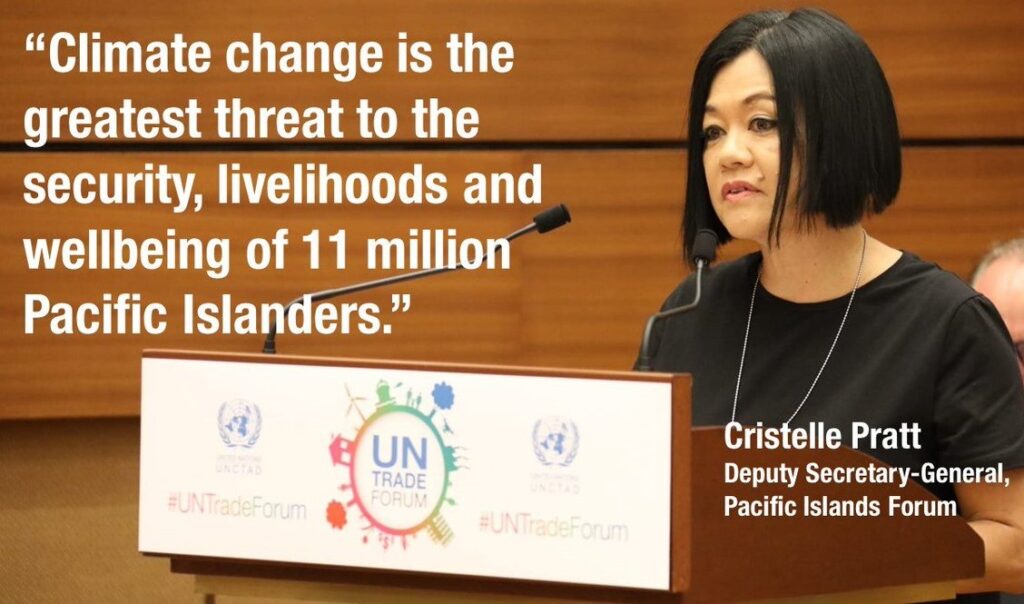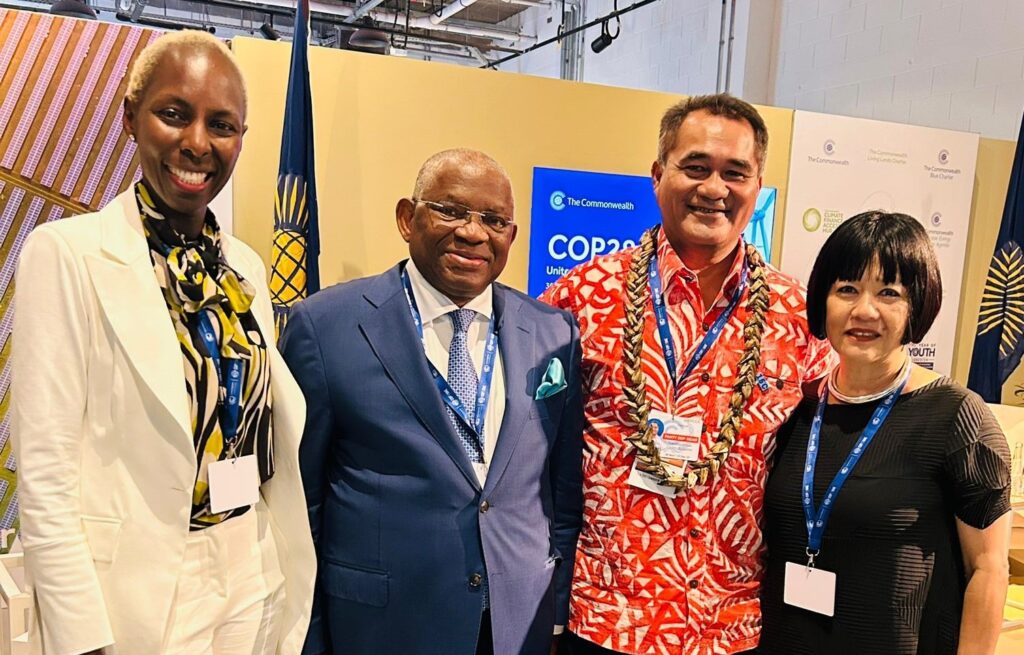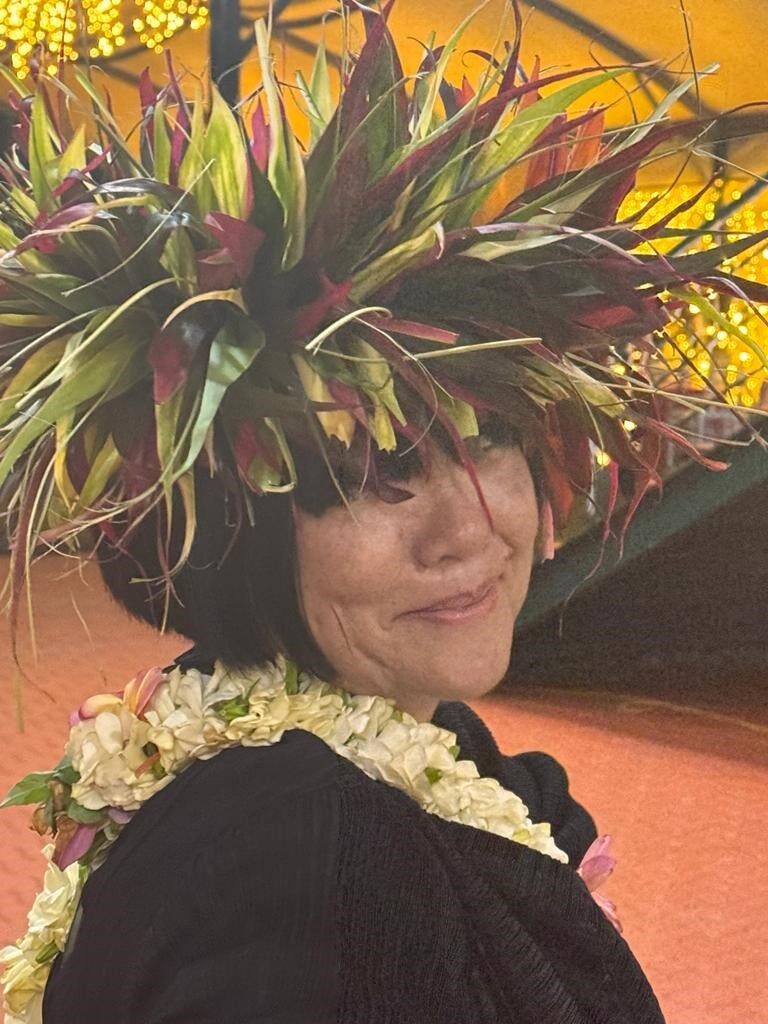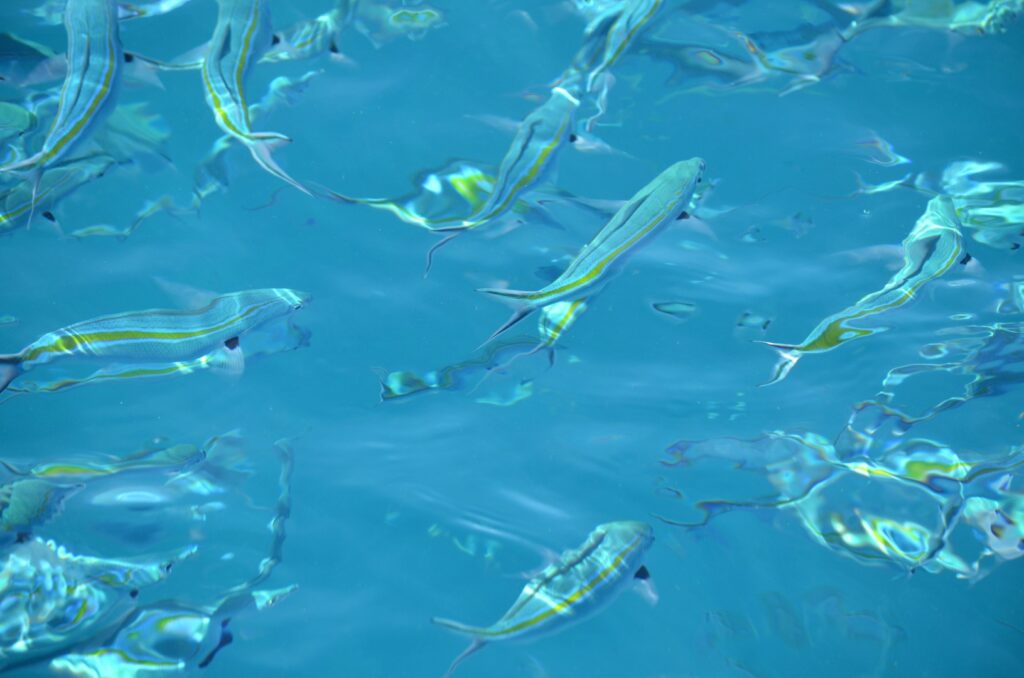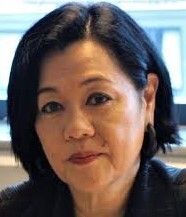Cristelle Pratt (Fiji)
Here, you will find the English version of the biographical note of the laureate, followed by the French one and some photos. — Voici la version anglaise de la notice biographique du lauréate, suivie de la version française et de quelques photos.
Cristelle Pratt is from the Fiji Islands (a country of 330 islands and more than 500 islets) – nestled within the sea of islands that make up the Blue Pacific Continent. At the age of three, she – as the second child of four children – lost her biological father to the sea. This was especially tragic for her mother, who was faced with the arduous task of raising three small children alone. When her mother remarried, her stepfather and a brother enlarged the family.
Life in Fiji was without the addiction of television and electronics, meant playing outside with friends for long hours and doing the usual chores, which also included the role of sous chef to a mother passionate in cooking. As swimming became her passion, she even represented Fiji at the Pacific Games.
Attending school in Suva, the capital, she enjoyed especially math and sciences. After a short stint at the Fiji-based University of the South Pacific, she left her country at the age of 16 to study geology at the Australian National University. The choice was less based on an interest in geoscience than on the fascination to explore a field where so few women at-that time were active. Most importantly, she discovered her real passion: sustainability and conservation of marine geology. Therefore, she relocated to the Nova Scotia-based Canadian Dalhousie University for her Master’s degree in marine management.
With that academic background, the Fiji Government asks her to take part in several marine scientific research cruises to improve our understanding of the deep-sea and its resources (both living and non-living). That included being one of the first female Pacific scientists to dive in a submersible to a depth of 2,500 meters to research hydrothermal vents and to participate with the research vessel “JOIDES Resolution” in drilling into the ocean floor to collect cores that tell us so much about earth systems.
To enlarge her professional experience, she moved to New Zealand to work in corporate risk management and business, especially the “Y2K problem”, the challenges for computer errors related to the formatting and storage in and after the year 2000.
From the private sector, she moved in various leadership roles to regional and international organisations in the region, including being the first female helm of the Pacific Islands Applied Geoscience Commission. This was followed by two terms as the Deputy Secretary General of the Pacific Islands Forum – the Pacific’s premier political organisation. In that function, she introduced a raft of reforms: develop forward leaning regional policies and integrating climate change and disaster risk resilience and conceptualising the “Blue Pacific Continent” narrative, as well as the “Pacific Resilience Facility”.
Understanding that key policies for the Pacific are linked globally, she accepted to move to Brussels to become, as the first Fijian national, the Assistant Secretary of the Organisation of African, Caribbean and Pacific States (OACPS), formerly known as ACP. Within these 79 developing countries, 15 are from the Pacific region, making it the largest international organisation from the Global South.
Her agenda and responsibility includes environment, climate action, disaster risk resilience, oceans, inland waters and fisheries; food security and nutrition and to support the 39 “Small Island Developing States” in their endeavours to address the existential climate threat to their places and peoples.
================================================================
Cristelle Pratt (Fidji)
Cristelle Pratt est originaire des îles Fidji (un pays de 330 îles et plus de 500 îlots), nichées au sein de la mer d’îles qui composent le continent bleu du Pacifique. Deuxième d’une fratrie de quatre, elle a perdu son père à l’âge de trois ans à la mer. Cela a été particulièrement tragique pour sa mère qui a eu la tâche ardue d’élever seule quatre jeunes enfants. Lorsque sa mère s’est mariée une deuxième fois, un beau-père et un frère ont agrandi la famille.
Leur vie était exempte des pièges de la télévision et des gadgets électroniques. Elle se caracterisait plutôt par de longues heures passées à l’extérieur avec des amis ainsi que l’accomplissement des tâches quotidiennes. Cela comprenait notamment le rôle de sous-chef auprès d’une mère passionnée par la cuisine. La natation étant devenue sa passion, elle a même représenté les Fidji en natation lors des Jeux du Pacifique.
Étudiante à Suva, la capitale, elle appréciait particulièrement les mathématiques et les sciences. Après un bref séjour à l’Université du Pacifique Sud, basée aux Fidji, elle a quitté son pays à l’âge de 16 ans pour étudier la géologie à l’Université nationale australienne. Le choix reposait moins sur un intérêt pour les géosciences que sur la fascination d’explorer un domaine qui incluait si peu de femmes à l’époque. Mais surtout, elle a découvert sa véritable passion: la durabilité et la conservation de la géologie marine. Elle a donc poursuivi ses études avec un Master en gestion maritime à l’Université canadienne Dalhousie, basée en Nouvelle-Écosse.
Suite à cette formation universitaire, le gouvernement fidjien lui demande de participer à plusieurs croisières de recherche scientifique marine pour améliorer la compréhension des fonds marins et de leurs ressources (vivantes et non vivantes). Elle a été l’une des premières femmes scientifiques du Pacifique à plonger dans un submersible à une profondeur de 2 500 m pour rechercher des sources hydrothermales et à participer, avec le navire de recherche « JOIDES Resolution », à des forages dans le fond océanique pour collecter des carottes qui nous en disent tant sur les systèmes terrestres.
Pour élargir son expérience professionnelle, elle a déménagé en Nouvelle-Zélande pour travailler dans la gestion des risques d’entreprise et des affaires, en particulier le « problème de l’an 2000 », traitant les défis liés aux erreurs informatiques du formatage et du stockage dans et après l’an 2000.
Issue du secteur privé, elle a intégré des organisations régionales et internationales de la région, où elle a occupé divers postes de direction, notamment en assumant, en tant que première femme, la tête de la Commission des géosciences appliquées des îles du Pacifique. Cette expérience a été suivi de deux mandats en tant que secrétaire général adjoint du Forum des îles du Pacifique, la première organisation politique du Pacifique. Dans ce rôle, elle a introduit une série de réformes pour élaborer des politiques régionales axés vers l’avenir, intégrant la résilience au changement climatique et aux risques de catastrophe, et en conceptualisant le récit du « Continent du Pacifique bleu », ainsi que la « Facilité de résilience du Pacifique ».
Comprenant que les politiques clés pour le Pacifique sont connectées à l’échelle mondiale, elle a accepté de déménager à Bruxelles pour devenir, en tant que première ressortissante fidjienne, secrétaire adjointe de l’Organisation des États d’Afrique, des Caraïbes et du Pacifique (OEACP), anciennement connue sous le nom d’ACP. Parmi ces 79 pays en développement, la faisant la plus grande organisation internationale du Sud, 15 sont originaires de la région du Pacifique
Son agenda et ses responsabilités comprennent l’environnement, l’action climatique, la résilience aux risques de catastrophe, océans, eaux intérieures et pêcheries; la sécurité alimentaire et la nutrition et pour soutenir les 39 « petits États insulaires en développement » dans leurs efforts pour faire face à la menace climatique existentielle qui pèse sur leurs territoires et leurs peuples.
